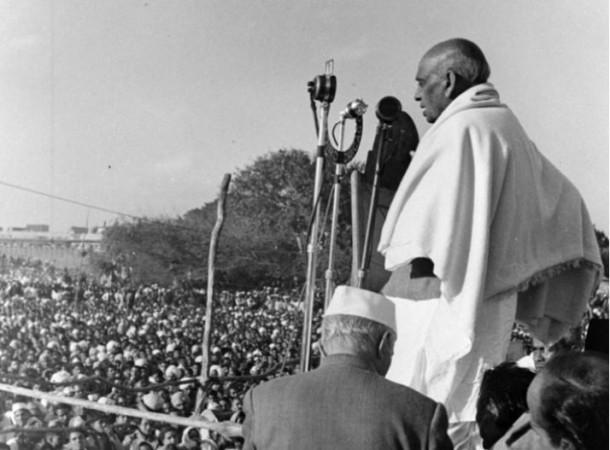
The unification of India, a remarkable feat that shaped the map of the nation, owes much of its success to the astute leadership and visionary approach of Sardar Vallabhbhai Patel. Fondly remembered as the "Iron Man of India," Patel's role in integrating the princely states into the newly independent nation was pivotal in creating the strong and united India we see today. His diplomatic finesse, political acumen, and unwavering commitment to national unity played a crucial role in bringing diverse regions under a common flag.
Born on October 31, 1875, in Nadiad, Gujarat, Vallabhbhai Patel emerged as a prominent political figure during India's struggle for independence. Educated in law, Patel practiced as a barrister before being drawn into the political arena. He aligned himself with Mahatma Gandhi and became an active participant in the Non-Cooperation Movement and the Salt Satyagraha. Patel's leadership skills were evident when he successfully led peasants of Bardoli in a nonviolent protest against oppressive taxes, earning him the title of "Sardar" or leader.
Role in Unification
As India gained independence in 1947, it was confronted with the challenge of integrating over 560 princely states into the newly formed nation. These states enjoyed varying degrees of autonomy and posed a potential threat to the unity of the nation. This was where Sardar Patel's strategic brilliance came to the fore. He believed that a unified India would be stronger economically, politically, and culturally.
Using a combination of negotiation, diplomacy, and, when necessary, firm action, Patel orchestrated the integration of these states into the Indian Union. His persuasive skills, pragmatic approach, and genuine concern for the welfare of these states' residents played a crucial role in convincing the rulers to accede to India. The use of the Indian Army in Operation Polo to annex Hyderabad, which was resisting integration, stands as an example of his willingness to use force when all peaceful avenues had been exhausted.
Instrument of Accession
Sardar Patel employed a tool called the "Instrument of Accession" to bring princely states under the dominion of India. This document symbolized the willingness of a princely state to align itself with the Indian Union and delegate authority to the central government in certain areas like defense, foreign affairs, and communications. Patel's ability to negotiate with the rulers, addressing their concerns while emphasizing the benefits of unity, played a vital role in convincing them to sign these instruments.
Challenges and Achievements
The process of unification was not without challenges. Patel faced opposition, apprehensions, and even some instances of revolt. The case of Junagadh, where the Nawab's attempt to accede to Pakistan was thwarted, highlighted Patel's diplomatic prowess. Similarly, the integration of Jammu and Kashmir, though incomplete, showcased Patel's dedication to the cause of unity.
Sardar Patel's role in the unification of India earned him the title of "Bismarck of India." His legacy is indelibly etched in the annals of Indian history as the leader who laid the foundation for a united and strong nation. His commitment to secularism, pluralism, and national integration serves as an enduring example for leaders across generations. Patel's efforts helped consolidate the diverse cultures, languages, and traditions of India into a cohesive whole.
Sardar Patel's contribution to India's unification is a testament to his unwavering dedication to the nation's progress and unity. His ability to navigate complex political landscapes, foster consensus, and uphold the principle of unity in diversity has left an indomitable mark on the country's identity. As we commemorate his legacy, we are reminded that a united India, forged through the efforts of leaders like Sardar Patel, continues to flourish and thrive in the contemporary world.
Destruction of the Vishwanath Temple in Banaras: A Dark Chapter in History
Aurangzeb's Reign: Unveiling the Historical Horrors
Veer Savarkar: Unveiling the Trailblazer of India's Freedom Journey